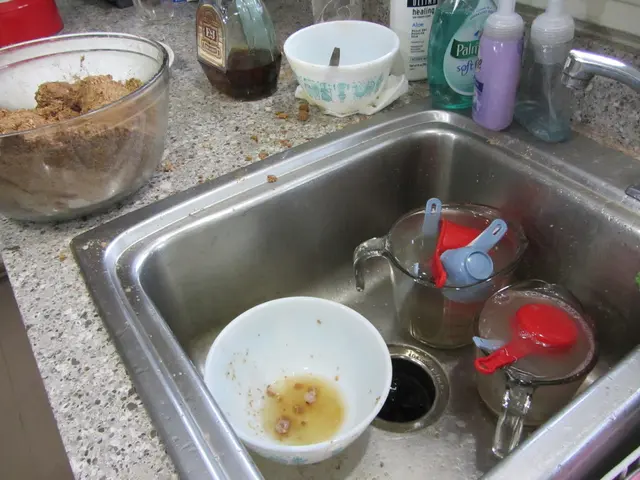Enhancement Strategies for Strengthening Fine Motor Abilities in Science Contexts
In the quest to help children develop essential hand strength and fine motor skills, a variety of activities can be both fun and effective. These activities not only cater to different age groups and preferences but also seamlessly integrate skill-building into daily routines.
One such activity is squeezing play dough or therapy putty, and stress balls. Repeatedly squeezing these objects strengthens hand muscles and provides sensory input, making them an ideal choice for fostering hand strength in young children [3][4].
Another engaging activity is using clothespins to move small objects, such as cotton balls. A clothespin relay, where children take turns moving the cotton balls, builds finger strength, coordination, and focus [4].
Dropping small items like beans into bottles is another activity that improves precision and fine motor control through careful hand-eye coordination. This simple yet effective exercise helps children develop the necessary skills for gripping and manipulating small objects [2].
Craft activities, such as hole punches and confetti making, also work hand muscles and coordination while being playful. These activities promote controlled finger and wrist movements, develop hand-eye coordination, and foster creativity [2][4].
Squirt bottle play, where children squeeze water out of squirt bottles, strengthens hand muscles while making the activity engaging and creative [2]. Popping bubble wrap provides repetitive finger flexion and sensory feedback, which can improve hand dexterity [3].
Activities that require "heavy work" of the hands and fingers, such as digging in the garden or playing with soil, also help build strength and provide sensory input [3].
Velcro and pipes on a big board can be used to create a changeable marble run, providing a challenge for hand and arm muscles. Squeezing a pipette of vinegar over baking soda stars can be a fine motor skill activity, while threading beads onto pipe cleaners and using them as a homemade number string can help improve hand strength and coordination [2].
The activity of adding little counters, marbles, or other small items to cornflour goo and using tweezers to pick them up can help develop hand strength. A stiff syringe requires strength to manipulate, making it another useful tool for building hand strength [3].
Learning Resources offers products that aid in developing fine motor skills, including tweezers and droppers. LEGO bricks, a staple in many households, can also be used to improve fine motor skills. Building towers with two hands, then one hand, then just the non-writing hand can help children develop their hand strength and coordination [3].
Red Ted Art has a post about teaching kids to sew, and using LEGO to model the 4 seasons can help with hand/eye coordination. Threading pipe cleaners into a colander can be used to make a funny hat, adding a creative and fun twist to hand strength development [2].
In conclusion, these activities combine play, sensory experiences, and purposeful hand movements that build both hand strength and fine motor skills effectively in children. By incorporating these activities into daily routines, we can help children develop the essential skills they need for writing, drawing, and other daily tasks [2][3][4].
Children can learn science while promoting health-and-wellness through activities like squeezing stress balls and play dough, which strengthens hand muscles and provides sensory input [1]. Craft activities, such as hole punches and confetti making, not only foster creativity but also work hand muscles and coordination [2]. Squirt bottle play, a fun and engaging activity, strengthens hand muscles while enhancing children's creativity [2]. Activities like adding small items to cornflour goo using tweezers help develop hand strength and coordination [3]. Kids can improve their hand dexterity by popping bubble wrap, giving them repetitive finger flexion and sensory feedback [3]. By integrating these science-based activities into daily routines, we can nurture children's essential skills for writing, drawing, and other daily tasks, making learning a fun and enjoyable experience [4].





